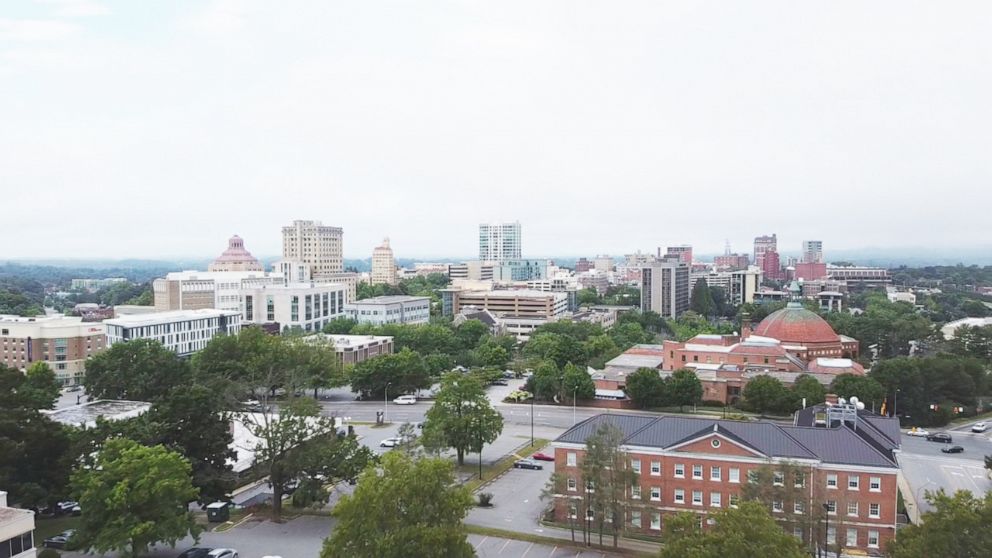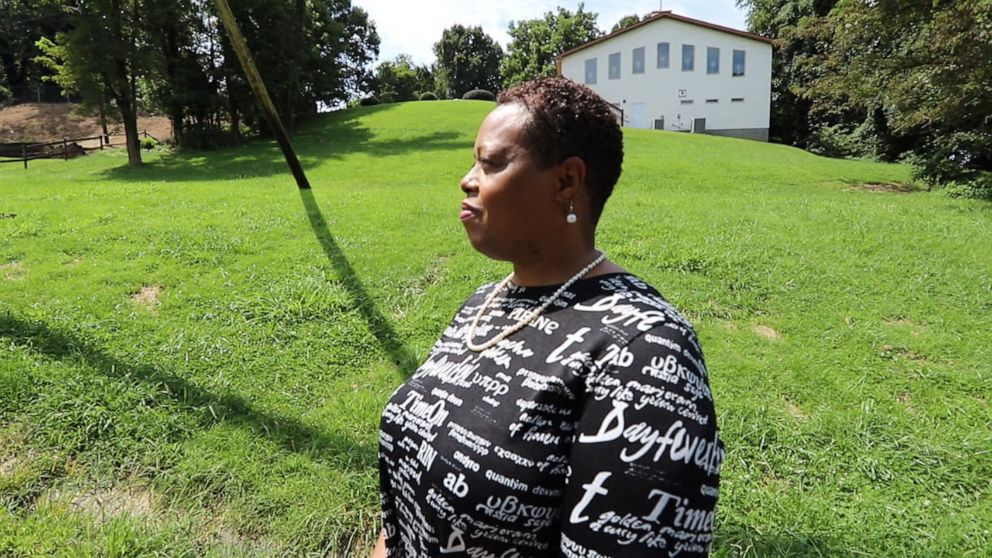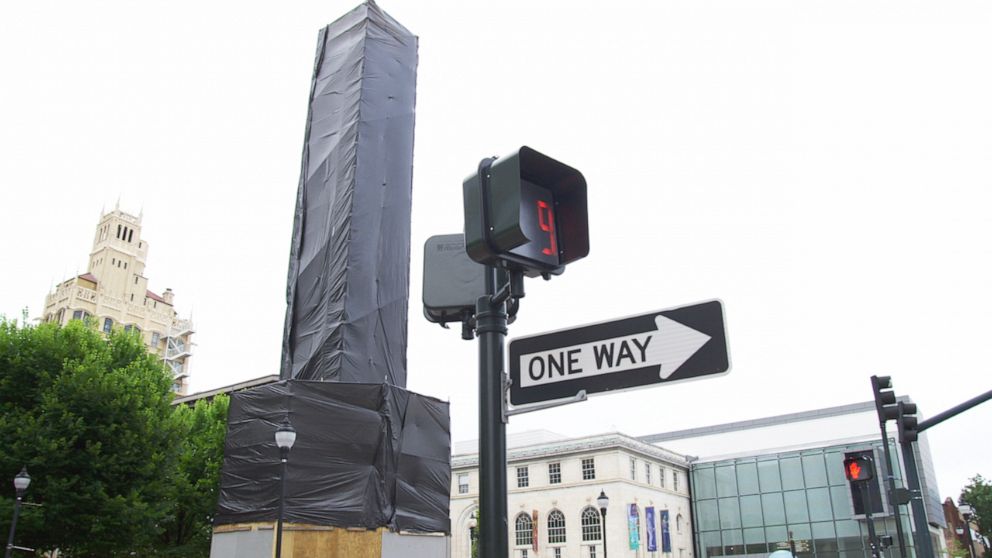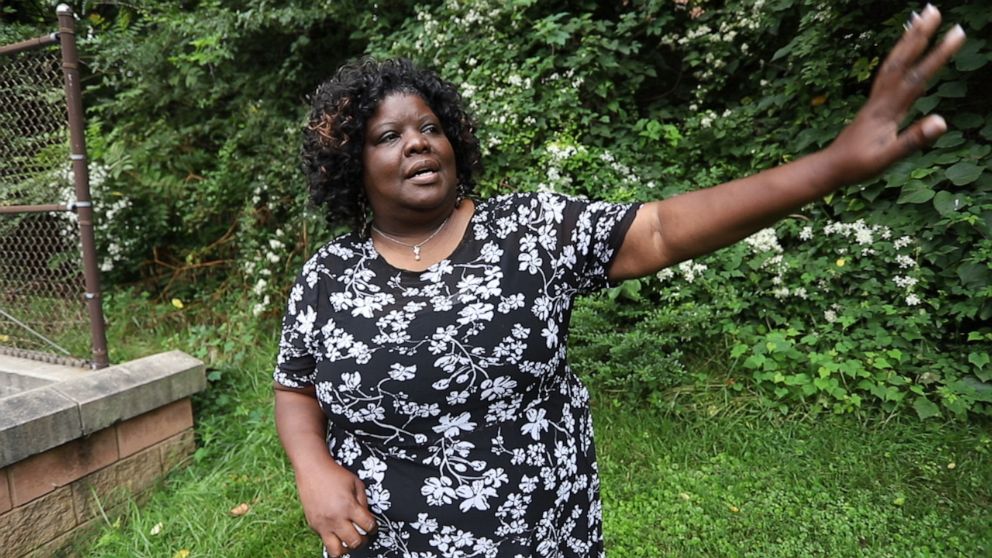Black residents discuss lasting injustices of urban renewal
Residents hope the city takes aggressive actions to close the racial wealth gap.
Priscilla Ndiaye Robinson can still vividly recall her childhood growing up in the segregated city of Asheville, North Carolina, in the early 1960s.
The sixth-generation African American resident said she remembers the first time her mother explained why she was allowed to drink from the “White’s Only” water fountain in downtown Asheville when she was a young girl.
Robinson described her predominantly Black community in the city’s Southside neighborhood as a place of a “refuge” from the greater Asheville area, which she says was plagued with racism.

“Southside was a community. It was a refuge,” Robinson said during an interview with ABC News at the YMI Cultural Center. “We did not travel outside that area much, especially coming downtown. It was dangerous, to be honest.”
Watch the full story on "Nightline" TONIGHT at 12:05 a.m. ET on ABC
“In our neighborhood, we had everything we needed, from the cradle to the grave,” the 59-year-old added. “We had grocery stores there. We had laundromats. We had beauticians.”
But urban renewal projects, aimed at revitalizing low-income communities, transformed her Black neighborhood. Thousands were displaced when the city moved to acquire land to build highways and other developments.
African American landowners were forced to sell or risk having their land taken by the state through eminent domain.

“The urban renewal implementation was devastating,” Robinson said, recalling the times she witnessed residents in the neighborhood, including her own family members, clearing out their homes and business and leaving furniture on the sidewalks.
“As I looked around, I saw groves of people dragging furniture. I saw my own family dragging chairs, carrying tables. It was like a wagon train,” Robinson added. “The community was not our community any longer.”
Dwight Mullen, Ph.D., a political science professor emeritus at the University of North Carolina at Asheville, said the urban renewal program was implemented as part of President Lyndon B. Johnson’s “Great Society” initiative, which sought to fight poverty and racial injustice by renovating impoverished communities across the United States.
“The intent was meant to improve the living conditions of African Americans. The actual outcome of urban renewal, that was another story,” Mullen said.

Thousands of families displaced by urban renewal acquisitions were relocated, while dozens of others moved into public housing. They were told it would be temporary as they would have the opportunity to buy land and rebuild their property at a cheaper rate.
However, neither Asheville nor the state of North Carolina fulfilled those promises. Redlining and discrimination prevented Black residents from purchasing new homes or obtaining new business loans.
“What happened in Asheville was one of the largest dislocations of African Americans, caused by urban renewal, in the southeast,” Mullen said. “Wherever urban renewal took place, we saw the decline of living standards for African Americans, including higher unemployment, poorer health, and academic achievement.”
Urban renewal projects displaced more than 300,000 people between 1955 and 1966, disproportionately affecting people of color, according to a report by the Digital Scholarship Lab at the University of Richmond.
The city’s dark history of mass housing disfranchisement left a lasting impact on Black communities for decades, displacing the grandparents of longtime resident Libby Kyles, CEO of the Youth Women Christain Association of Asheville, whose family lost its land during lot development in the 1980s.
“Prior to being a public works building, this was the backyard that we played in,” Kyles told ABC News during a walking tour, pointing out the honeysuckle bushes that remained in the lot, which used to be her family’s home.
“What is most angering to me is that it wasn't just a loss of their homes,” Kyles said. “It was a loss of what could've been generations of wealth for our family. It was a loss of community, and it was, in a lot of ways, a loss of dignity and respect.”

In July, as the U.S. was confronting a racial reckoning following the death of George Floyd, the Asheville City Council took a historic step: It voted unanimously to provide reparations to African American slave descendants and formally apologize for its role in slavery, discriminatory housing practices, and urban renewal.
As city officials plan the next course of action, Kyles said it’s imperative that African Americans are heard and well-represented during negotiations as the city seeks to determine what reparations will look like in the coming years.
“When you say that you are signing a resolution for reparations, we want to see some teeth behind it," Kyles said. “We don't want to just see words on a paper. We want to see a process and we don't want you to build it for us without us. We want to be at the table.”




